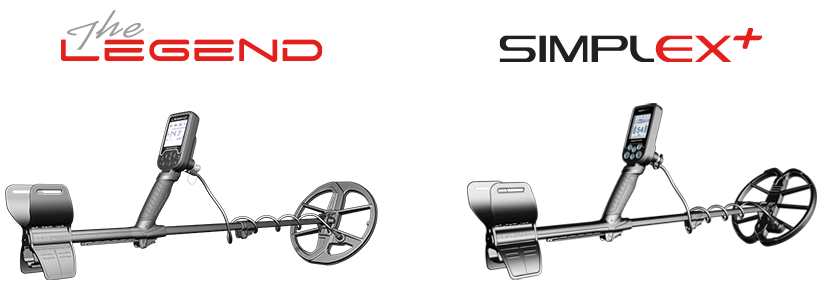Jeffrey D.
Member
I purchased the Anfibio back in February. After receiving the detector, I read the manual from front to back several times, watched you-tube videos, posted some questions in the forums trying to get the most out of it. The detector was just short of being painful to use with all its chatter and not getting very good depths or good readings/signals on targets that were just 5 inches deep. I started to figure out that this detector is just not made to hunt very well in highly mineralized soils. I also have a Explorer SE PRO and AT Max that I have been breaking out when the Anfibio is too unstable to use. Finally, I went to a few different areas where the ground wasn't packed with fill dirt or highly mineralized soil. I was thinking that if the Anfibio couldn't cut it in these last two sites that maybe it is just not a good detector for the soil in Ohio and its time to sell it.
Well, I quickly went from wanting to wrap the detector around a tree to basically saying holy cow that was a deep good sounding coin. The first park I went to has been heavily detected over the past 40 years. I've actually had other detectorists tell me that I'm not going to find anything old since this park has been pounded to death. After setting up the detector and ground balancing, one of my first signals was a dime signal showing 8 inches deep. It was probably more like 9 inches deep and I pulled out a 1924 mercury dime. I was surprised how good the signal was for such a deep target. After several deep wheaties and some clad mixed in,,,I hit another good target, this time it was a quarter signal bouncing around from 87 to 89 at 8 inches deep. That ended up being a 1941 Washington Quarter at almost 10 inches. I ended up digging a small silver ring, a buffalo nickle and a few more wheats before heading to the next site.
The next site had also been pounded and pounder over the years, but I quickly found a 1907 Indian and a 1919 Wheatie, both at 8 plus inches deep. I ended the day with some really nice deep finds from sites that have been pounded year after year by other detectors ( 2 silver coins, 1 silver ring, 1 indian, 1 Buffalo, 2- 1940 Washington Nickles, 17 wheats (and I didn't count all the clad). I'm still not 100% convinced that I can sell both the SE pro and AT MAX and stick with just the Anfibio since it really has problems in highly mineralized sites, but one thing I do know is that when you get on some "good dirt" is that the Anfibio will definitely sniff out those really deep good targets that other detectors have been missing. Getting a pretty solid signal on coins that are eight and nine inches deep is impressive. Most other detectors I've used only give me a faint, whisper of a signal for a penny that is day 9 inches deep.
Hope this helps anyone that is going thru the same learning curves as I am.
Well, I quickly went from wanting to wrap the detector around a tree to basically saying holy cow that was a deep good sounding coin. The first park I went to has been heavily detected over the past 40 years. I've actually had other detectorists tell me that I'm not going to find anything old since this park has been pounded to death. After setting up the detector and ground balancing, one of my first signals was a dime signal showing 8 inches deep. It was probably more like 9 inches deep and I pulled out a 1924 mercury dime. I was surprised how good the signal was for such a deep target. After several deep wheaties and some clad mixed in,,,I hit another good target, this time it was a quarter signal bouncing around from 87 to 89 at 8 inches deep. That ended up being a 1941 Washington Quarter at almost 10 inches. I ended up digging a small silver ring, a buffalo nickle and a few more wheats before heading to the next site.
The next site had also been pounded and pounder over the years, but I quickly found a 1907 Indian and a 1919 Wheatie, both at 8 plus inches deep. I ended the day with some really nice deep finds from sites that have been pounded year after year by other detectors ( 2 silver coins, 1 silver ring, 1 indian, 1 Buffalo, 2- 1940 Washington Nickles, 17 wheats (and I didn't count all the clad). I'm still not 100% convinced that I can sell both the SE pro and AT MAX and stick with just the Anfibio since it really has problems in highly mineralized sites, but one thing I do know is that when you get on some "good dirt" is that the Anfibio will definitely sniff out those really deep good targets that other detectors have been missing. Getting a pretty solid signal on coins that are eight and nine inches deep is impressive. Most other detectors I've used only give me a faint, whisper of a signal for a penny that is day 9 inches deep.
Hope this helps anyone that is going thru the same learning curves as I am.



